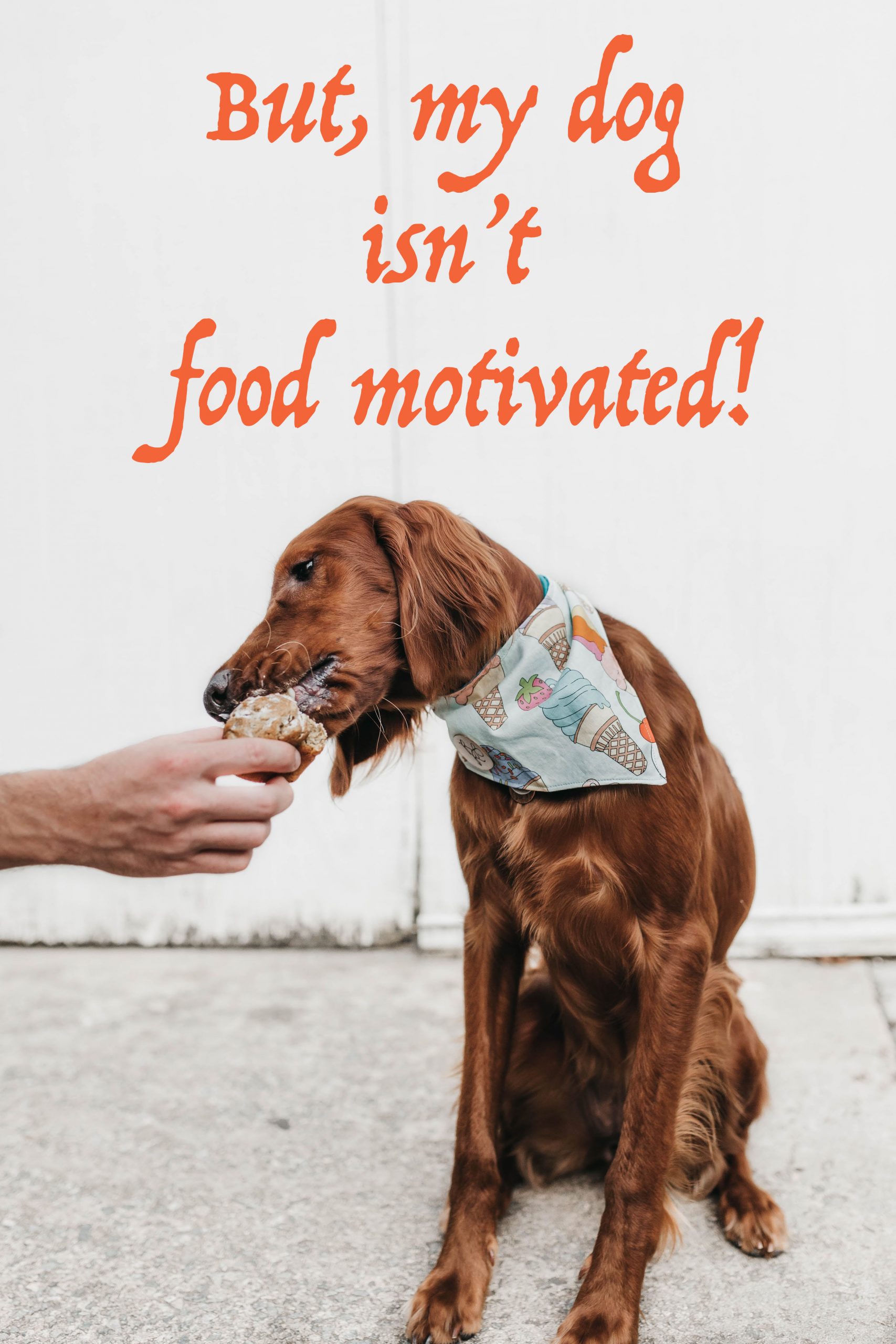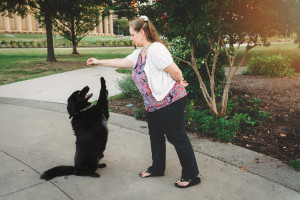If I had a dollar for every time I’ve heard this, I’d be sitting on a private island somewhere retired right now. And honestly, before I was a trainer, before I knew better, I said the same thing about my BooBoo. It’s easy to jump to that conclusion if you’re trying to get your dog to do something and they’re not doing it even though you’re offering food. But usually there’s something else going on. Let’s dive into those.
First things first, unless your dog is sick, your dog is eating and managing to stay alive then he’s food motivated enough to get up and walk over the food bowl or procure calories in some other way. (I could stop here, but I won’t.)
Food is typically how we motivate dogs in training (sure, some really drivey dogs like working border collies or field line labs may work for fetch or tug, but I’d put money that they’d also work for rare cooked steak). When a dog doesn’t do what we expect, there can be a few things going on.
- The dog is afraid. Fearful dogs won’t eat. They have bigger things to worry about, and their body physically changes to prepare the dog for danger. Fear triggers a response in the amygdala and prepares the body for fight or flight, which means stress hormones are released, heart rate increases, pupils dilate, respiration increases, blood flow increases to muscles that may be needed and organs not vital in this survival moment, like the gastrointestinal system, slow down. So, with all this happening, it’s unsurprising that if a dog is afraid, they’re not hungry. And in this instance, we need to help the dog feel safer, often by creating distance between the dog and the scary thing, so they will take food.
- The dog doesn’t know what you’re asking for. This is a question of training. It’s a “what?” problem. The dog isn’t doing what you want because he’s not trained well enough and is asking “what do you want me to do?” He may very well want the food you have, but doesn’t know what to do to get it. The dog needs more training to clear up the confusion.
- The dog is not hungry. Hunger, just like many other things, wax and wane. So if a dog has just eaten a meal, then you offering more food likely isn’t going to be very motivating. Picture this: on Thanksgiving day you’re at my house and after we’ve eaten seconds and thirds, I ask you to help me with some really hard chores, offering you another piece of pie as payment for helping. Changes are pretty good that piece of pie isn’t going to be motivating when you’re stuffed already. But, if I offered you $5000, maybe you’d reconsider helping. Often when training, we withhold a meal, so the dog is hungry and motivated by our food. The dog isn’t going to starve – he’s still getting his calories, but we can leverage when and how he gets his food and use it in the context of training.
- The food (or other reward) you’re offering isn’t motivating to the dog. We have to remember, we don’t get to decide what the dog finds motivating. You may think you’re offering something the dog should find motivating, but if he doesn’t, then it’s not motivating. The dog decides, not us. Will he take what you’re offering for free? If not, you should up your value. Also, bear in mind, novelty is interesting to most dogs. So maybe mix your foods up a bit – nobody likes the same thing all the time. And, if you’re asking for a more difficult behavior then definitely up the ante. I tell my clients there are foods worth a penny and food worth $1000 and we need to decide which one to use based on what we’re asking the dog to do. Food is their paycheck and nobody (not you, not me, not your dog) works for free. If you’ve got competition in your environment, then what you’re offering the dog better be more valuable to him. You’re offering a dry cookie and there’s a squirrel running around – which one do you think your dog is going to pick? Why should he not chase the squirrel and come to you when you call? What’s in it for him? Being told he’s a good boy? Or, are you throwing a meatball party where he gets 30 seconds of eating meatballs?Consider this scenario. You’re working on a project at work, staying late working overtime, expecting a big, fat paycheck (because money is motivating for people) and your boss comes in when it’s all over, pats your shoulder and tells you “nice job, thanks.” No extra money – just “praise.” We do this all the time to our dogs. Dogs don’t work for free. We need to pay them with something that they find motivating. This is almost always the issue I encounter when people say their dog isn’t food motivated. Clients are just not offering high value enough food. I’ll be sitting in a consult, as they’re telling me their dog isn’t food motivated, while the dog is actively doing behaviors I’m asking for cheese or chicken. Or the fearful dog is approaching for tossed rare steak.Also worth noting, I always use real human food in training for several reasons. It’s motivating, it’s more cost effective (I can buy a bag of high quality commercial treats for $8 or I can buy a few pounds of chicken breast for that same cost. And the chicken will last a lot longer!) and I know exactly what the dog is getting, so if weight is a concern, it’s easier to figure out and adjust caloric intake. My treat bag is usually filled with cheese (pecorino, cheddar or goat), chicken breast, hot dogs, meatballs and rare steak.
If none of these apply, then I’d probably recommend a vet check to make sure your pup is healthy. Otherwise, get training using these tips! And don’t forget, I offer remote sessions for all types of training.
Happy Training!
–Kate





